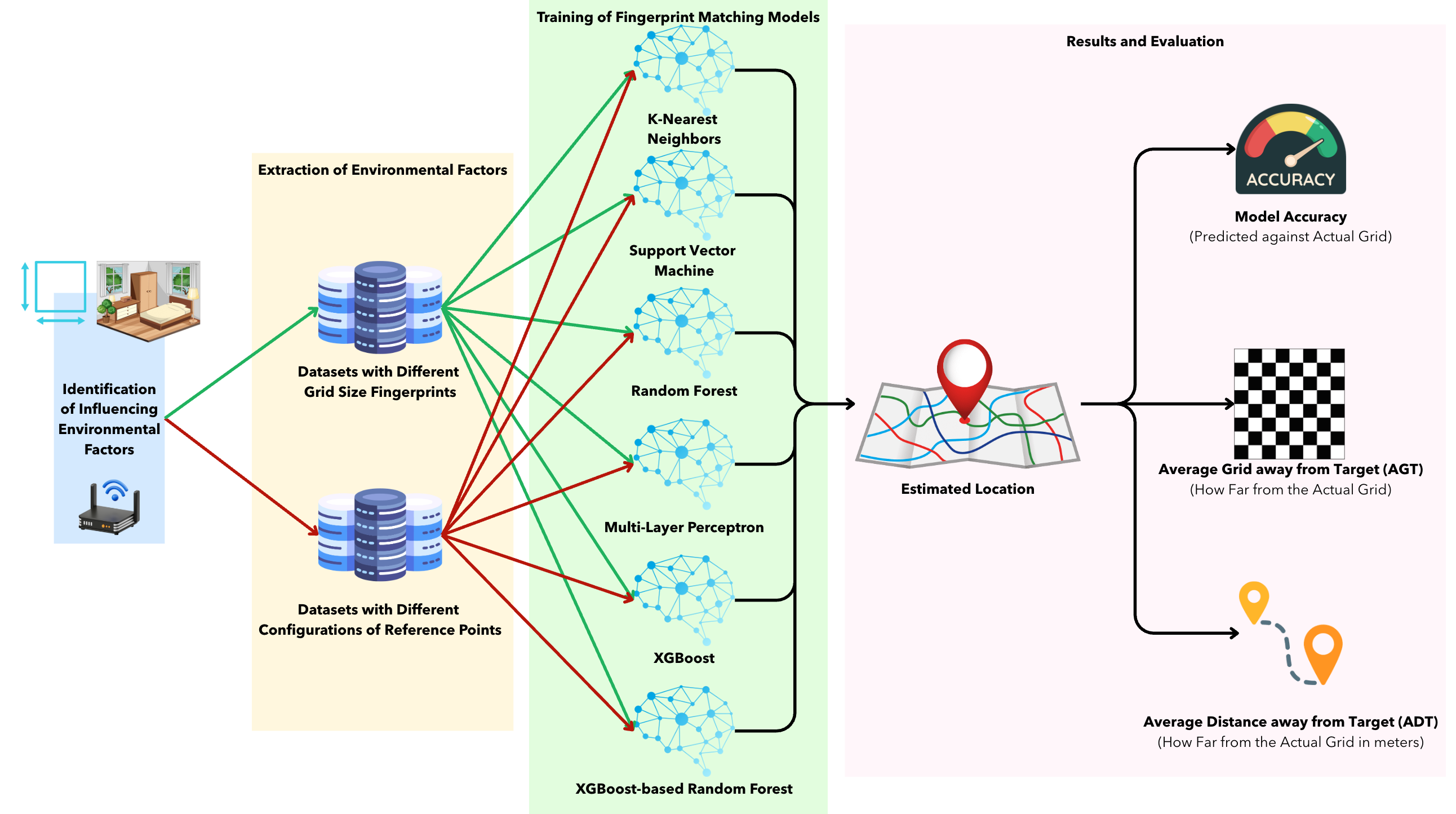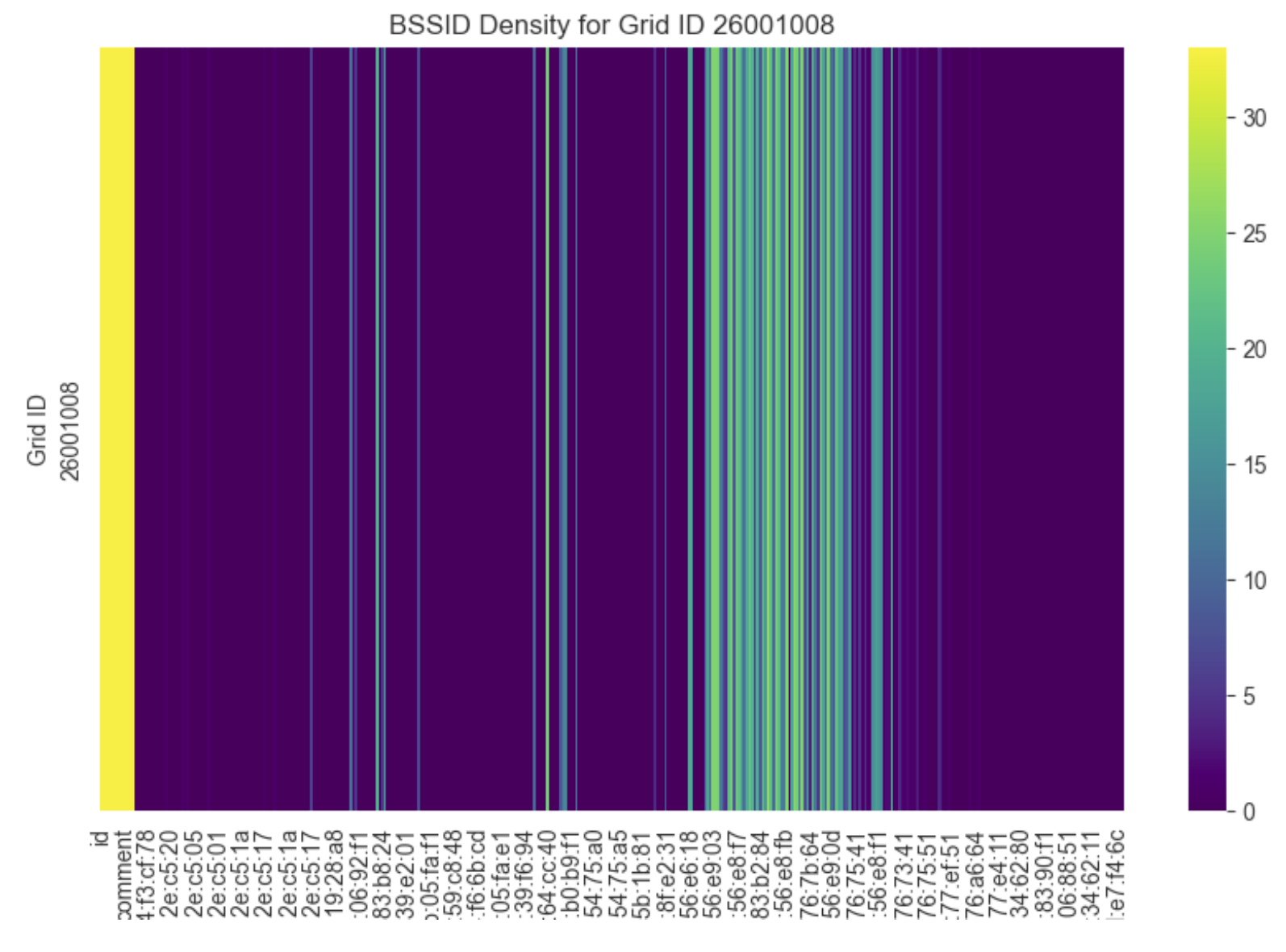A Multi-floor Indoor Position System using Wi-Fi Signals
with ML Approaches
Developing an IPS application that can accurately determine indoor position from the Wi-Fi signal strength with ML models.




Project Abstract
An Indoor Positioning System (IPS) is an effort to utilize advanced signal processing to support localization within buildings or enclosed environments where satellite-based signals, like Global Positioning Systems (GPS) or Global Navigation Satellite Systems (GNSS), are unavailable. The fingerprinting technique is a prominent solution for creating radio maps and positioning users using signals such as Wireless Fidelity (Wi-Fi) or Bluetooth Low Energy (BLE) through Received Signal Strength Indicator (RSSI) values mapped across a radio grid. Machine Learning (ML) has been applied to classify users' positions based on RSSI values. However, the performance of previous ML-based fingerprinting works has proven insufficient for practical, real-world use cases. In this project, we thoroughly analyze the parameters or environmental factors of IPS to identify an optimal solution that maximizes the performance of ML-based IPS. We present findings on the ideal parameters and appropriate ML models for multi-floor IPS, providing valuable insights for researchers and practitioners seeking to develop accurate IPS solutions in diverse environments.
Problem Statement
The use of Machine Learning (ML) as a fingerprint matching algorithm in IPS has proven effective for improving accuracy, especially when combining data from different domains or locations. A previous study applied online heterogeneous transfer learning to enhance IPS performance. By utilizing ML algorithms such as Support Vector Machine (SVM), Decision Trees (DT), k-Nearest Neighbor (kNN), Random Forest (RF), and Artificial Neural Networks (ANN), the system can estimate unknown locations even when pre-collected fingerprints are not covered.
However, during the training phase, the design of grids as reference points for data collection and the selection of ML models for location estimation are two critical factors that significantly affect the performance of an IPS. A previous study attempted to combine a grid-based indoor positioning concept with ML and fingerprinting techniques on Wi-Fi RSSI values. The test site was a single-floor environment of a building covering approximately 200 square meters. The study used a relatively-large grid size (16.75m x 15m), but the results were insufficient, resulting in a limited number of data points for training the ML models. The shortcomings of the aforementioned study raise an important question: What are the optimal grid size and environmental factors for a multi-floor IPS when using grid-based fingerprinting with machine learning approach on Wi-Fi RSSI values?.
Project information
- Category Internship Student Project
- Project date June 2025 to Present
- Team Member Burin Intachuen, Rin
Mhadhanagul Charoenphon, Dallas
Tanakorn Mankhetwit, Japan - Project Advisor Dr. Charnon Pattiyanon